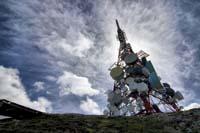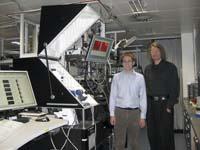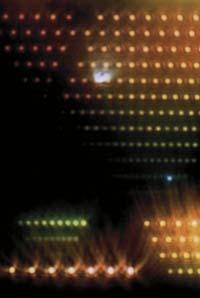The debate continues on the rooftops

Although the security measures of the telephony antennas are not enough for some people, according to physicists there is no danger
In August of last year, ICNIRP confirmed that the criteria for protection against non-ionizing radiation are adequate. In fact, in Europe the regulations on mobile and similar antennas are based on the recommendations of this commission. However, there are people who consider that these measures are not sufficient. However, physicists believe there is no reason to think.
ICNIRP is the International Commission for the protection against non-ionizing radiation. It is made up of independent scientists from different fields: physicians, dermatologists, epidemiologists, biologists, photobiologists, physiologists, physicists, electrical engineers and dosage experts. Among others, they are responsible for determining the safety limits of low-frequency radiation sources.
In fact, ICNIRP decided in 1998 those maximum limits. For example, at a frequency of 900 MHz (usual frequency in mobile telephony) a maximum power density of 450 ?W/cm2 was proposed. These limitations are recommendations and for their implementation, all the investigations carried out so far, were analysed in order to verify the value of living organisms that showed some effect. Well, ICNIRP decided that the maximum limits were 50 times lower than those values.
The recommendations of the ICNIRP have counted with the approval of the World Health Organization and the main international organizations in the field of physics and engineering, in which those responsible for the countries of the European Union were based on the drafting of legislation. In some countries the same values are used in the regulations and in others they are further limited, such as Italy, Switzerland and Russia. Even within some countries, in some communities, the maximum values are lower than those set by the government. In Spain, for example, the maximum power density authorized in the Castilla-La Mancha Community is 10 ?W/cm2.
For those who question the adequacy of the security measures, the existence of this type of difference in the regulations of one type and another raises the doubt that the fact that the recommendations that sustain the rules are so old, emphasizes this doubt.
However, ICNIRP has reviewed the research carried out since then and has found no reason to change the recommendations, stating that it ratifies them last August.
On the other hand, the measurements made on mobile phone antennas show that the power density emitted is much lower than the established maximum. According to data from the Spanish Ministry of Industry, in 2007 the highest value was measured in the Community of Madrid, reaching 2.32 ?W/cm2, well below the maximum limit established (450 ?W/cm2) (193.9 times lower).

In Euskal Herria, in all the measurements that have been made, the values collected have been far from the legal limits. This has been confirmed by Nerea Zabala and Joseba Zubia, professors of the Department of Electricity and Electronics of the UPV/EHU and the Department of Electronics and Telecommunications respectively.
In addition, Zabala does not believe that the radiation emitted by the antennas can be harmful. According to him, the radiations used by mobile and cable systems have little energy, so they are not in danger. And he adds, "on the contrary, from the ultraviolet they have a lot of energy, they are ionizing and have the ability to cause damage." Thus, it seems paradoxical that people worry more about the radiation emitted by the antennas than the one emitted by the Sun.
Joseba Zubia agrees with Zabala and firmly expresses his position. "I have participated in round tables and debates giving my opinion on what I know and what I see. If the antennas showed me some clear proof, I would have no problem asking for the antennas to be removed or security measures to be sharpened. But for the moment all the tests show the opposite, that they are not dangerous for health."
In these round tables he realizes that people have false beliefs. For example, many ask that antennas be installed outside the village. "The question is: Can they be put on the mountain? And the answer is: Yes. But, should we place them? Well the answer is no." And if they are placed far away, they should have more power. Therefore, the Bridge proposes the installation of small antennas around a watt, in order for the coverage and signal levels to be similar in all places. He is a supporter of continuing to investigate in this line.
On the other hand, he is surprised that some people are so afraid of the antennas and, however, use the mobile, since "through the phones they receive more radiation than the antennas. And he puts the example that a mobile can emit a power of a watt and the speaker has stuck to the ear, while an antenna can contain 20 watts, but a person at 10 meters will only get 0.2 watts.
Returning to the antennas, the Bridge also has a solid opinion on epidemiological studies that relate the number of antennas to cancer cases. "They are like the investigation of the cockroaches: as the legs are removed, the cockroaches become deaf, since when they are called they do not go to the researcher. For those conclusions are erroneous". And then: "If the number of condoms is related to cancer cases, it would also be deducted that they have a direct relationship. I have tried with shoes and come out".







